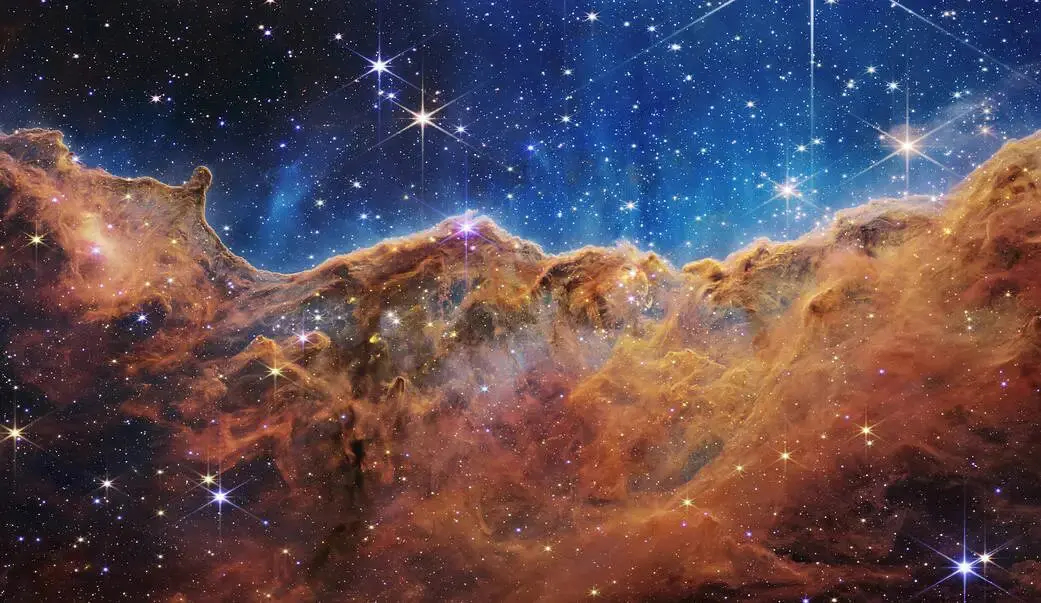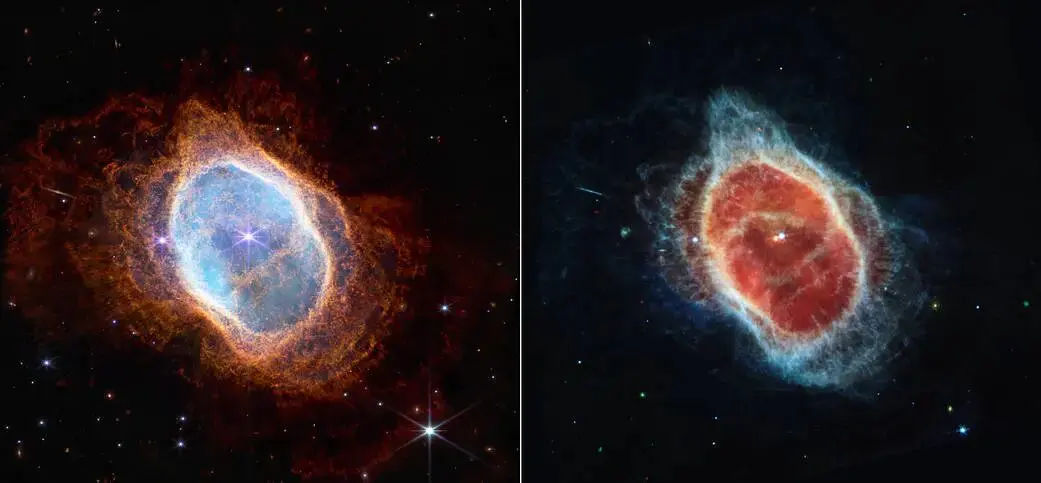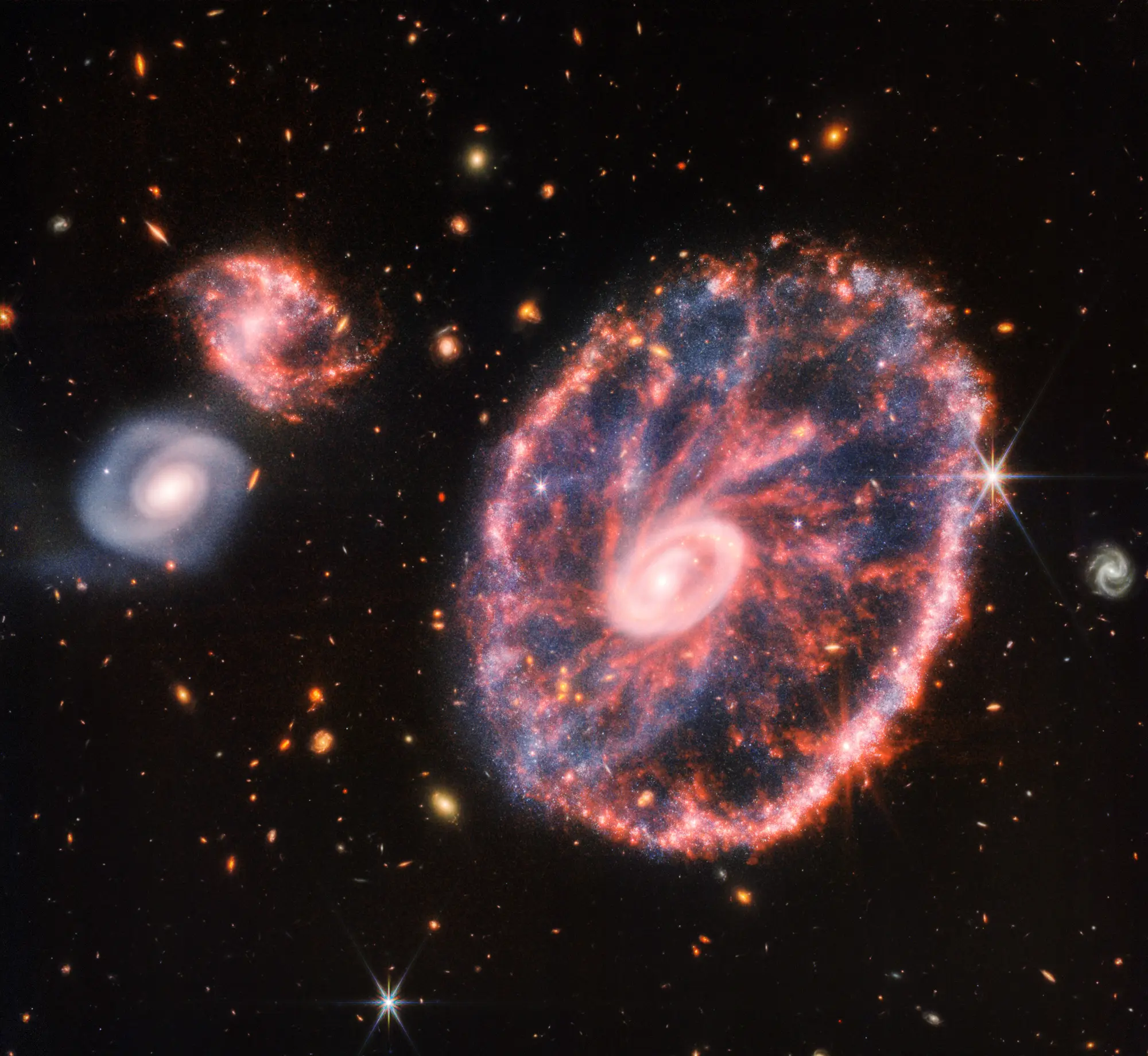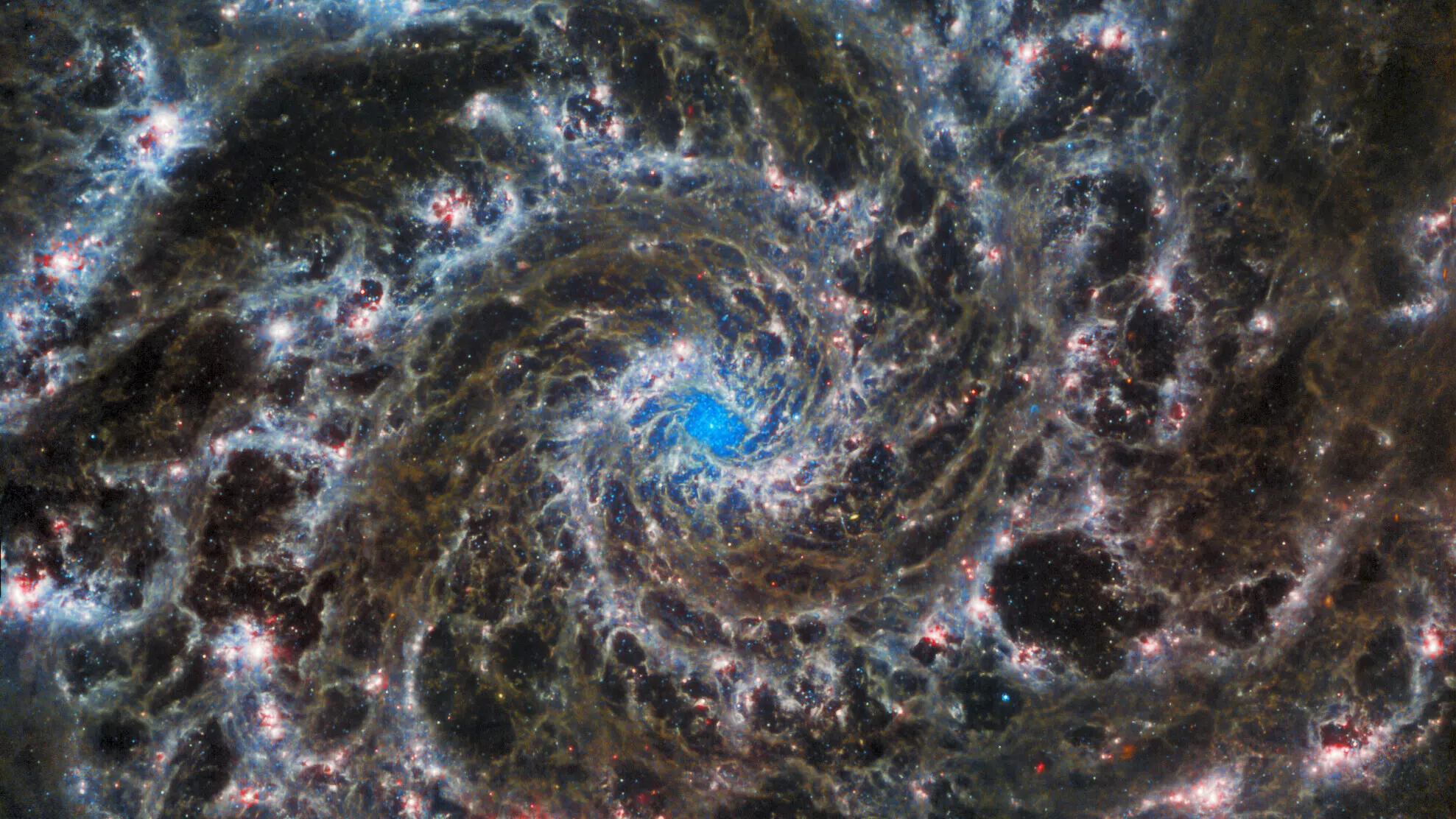Since it was launched into the space in 2021, the James Webb Telescope has sent us more than scientific data: It has revealed a visually hypnotizing universe.
With an unprecedented capacity to record cosmos details in high definition, the images of James Webb show us stars rising, galaxies colliding and structures that were beyond the reach of any previous telescope.
The result? Photos of the space that are, at the same time, aesthetic shows and windows for knowledge.
What do the images of the James Webb telescope reveal about the universe?
Beyond aesthetic beauty, James Webb images are helping scientists to answer key questions about the cosmos.
Compared to the Hubble telescope, Webb offers a deeper and more clear view of outer spacecapable of recording more distant and therefore older objects, thus revealing chapters of the history of the universe hitherto inaccessible.
Meet the five most surprising images captured by the James Webb telescope:
1. Deep field of webb (webb’s First Deep Field)
Right at its debut in July 2022, James Webb has already shown what came. One of his first images was the so -called deep webb field: a mosaic full of distant galaxies, captured with a wealth of detail never seen.
Some of those galaxies are so far that Their light took over 13 billion years to reach usthat is, we are looking at the universe at its younger stage.
2. Cosmic cliffs (Cosmic Cliffs)
The image “cosmic cliffs” is one of the most famous ever captured by the James Webb telescope. It shows a part of Carina’s nebula, a gigantic star nursery located about 7,000 light years from Earth.
 Image of cosmic cliffs, recorded by the James Webb Telescope. (Photo: NASA/ESA/CSA/STSCI)
Image of cosmic cliffs, recorded by the James Webb Telescope. (Photo: NASA/ESA/CSA/STSCI)At first glance, the scene looks like an illuminated mountainous landscape, but what we are seeing there is a region of star formation. The “cliffs” are actually huge gas wallscarved by radiation and winds emitted by newly graduated and extremely hot stars.
3. Nebulosa do Anel Sul (Southern Ring Nebula)
The southern ring nebula is one of the most revealing and impressive images already captured by James Webb, because It demonstrates what happens when a star similar to our sun reaches the end of life.
With gas layers being expelled to space, the image shows a colorful ring with a complexity of shapes that the Hubble telescope, its predecessor, could not capture so clearly.
 Image of the southern ring nebula, recorded by the James Webb telescope. (Photo: NASA/ESA/CSA/STSCI)
Image of the southern ring nebula, recorded by the James Webb telescope. (Photo: NASA/ESA/CSA/STSCI)This discovery was possible thanks to the infrared sensitivity of the webb, which can see inside the dust layers.
4. Car Galaxy (Cartwheel Galaxy)
A Cartwheel Galaxyor “car wheel galaxy” in Portuguese, is located about 500 million light years from Earth, in the constellation of the sculptor.
 Image of car wheel galaxy, recorded by the James Webb telescope. (Photo: NASA/ESA/CSA/STSCI)
Image of car wheel galaxy, recorded by the James Webb telescope. (Photo: NASA/ESA/CSA/STSCI)Your name comes from Unusual format that even resembles a car wheelwith an external shine ring, a dense central region and “rays” connecting the two parts. This different look is the result of a cosmic collision. James Webb images, however, show that this galaxy is still changing.
5. Ghost Galaxy (Phantom Galaxy)
The image of the Ghost Galaxy (M74), made by the James Webb telescope, reveals the center of an almost perfect spiral galaxy, located 32 million light years from Earth.
 Image of Ghost Galaxy, recorded by the James Webb Telescope. (Photo: NASA/ESA/CSA/STSCI)
Image of Ghost Galaxy, recorded by the James Webb Telescope. (Photo: NASA/ESA/CSA/STSCI)For the first time, scientists were able to clearly observe the star cluster at its nucleusbefore hidden by clouds of gas and dust.
How does the James Webb telescope capture these images?
Unlike ordinary cameras, James Webb operates mainly in infraredwhich means it can detect the heat emitted by stars, planets and clouds of cosmic dust. This allows you to observe regions of the universe that were once covered by gas layers, such as star nurseries – where new stars are being formed.
The large balcony of the telescope is in its combination of ultrasound sensors and a giant mirror, over 6 meters in diameter. Each image he sends undergo a thorough processing made by NASA experts and other space agencies. Colors, for example, are “translated” into the visible spectrum, revealing details that would otherwise go unnoticed.

